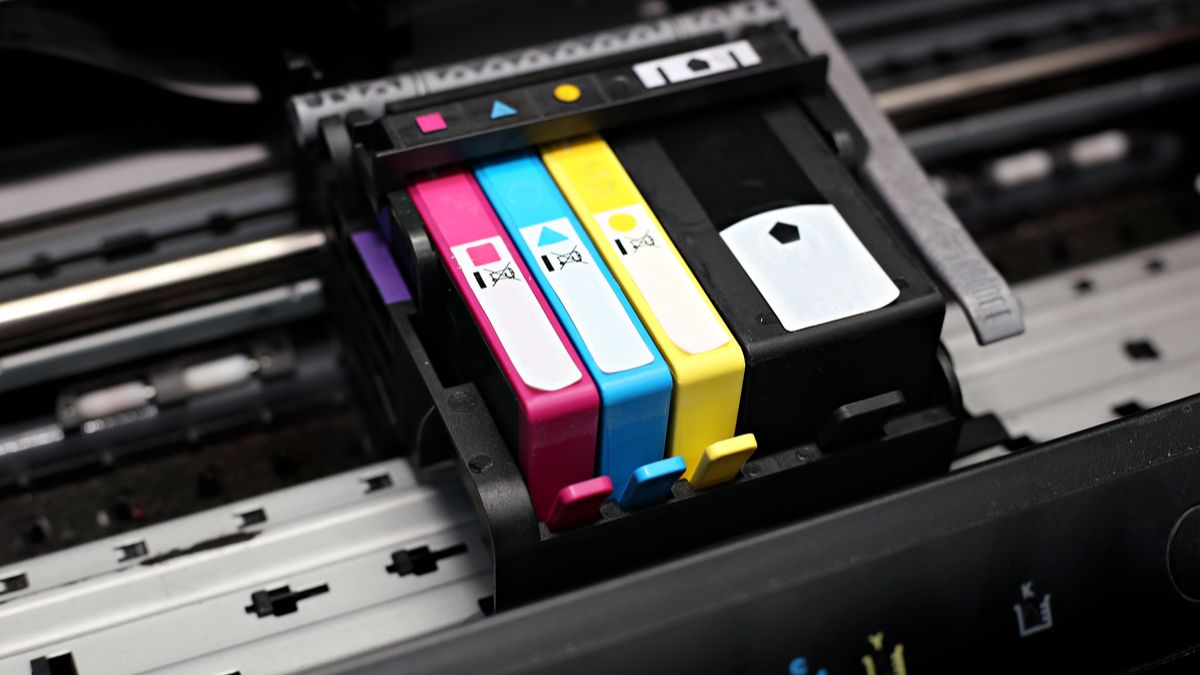Quick Links
Inkjet printers have become ubiquitous in the world around us, as is printing technology, but do you know how it works? We'll demystify the process in this quick explainer and look at what goes into printing in general.
How Does an Inkjet Printer Work?
The fact that Inkjet printers are so common hides the fact that they're a pretty marvelous work of engineering.
All the magic happens in the nozzle but is more than what it seems; in reality, it isn't one large nozzle but rather hundreds if not thousands of microscopic nozzles. These can often be as small as 10 micrometers in diameter, which is about a tenth the size of a human hair. So the tinier these holes are, the better the resolution of the printed image can be. Sort of like how pixels work with screens, the size and density of these tiny nozzles dictate the quality of the print.
The next step is releasing ink droplets through these nozzles at a very precise rate. Manufacturers delicately engineer the ink in terms of viscosity and pigment density to ensure that it's always the same amount of ink and that it looks just right on the page. For color printers, there are often hundreds of separate nozzles for the different color inks, in addition to the ones for the black ink.
Once the ink has been deposited on the paper, the only thing left is to dry, which sometimes takes a while given the Inkjet printing process. This is why Inkjet-printed pages are prone to smudging; the ink hasn't thoroughly dried yet. That being said, you can get around that by using pigment-based inks, which drops a suspension of pigment in a solvent that evaporates quickly, and therefore dries faster while leaving the pigment behind.
Why Is Printer Ink So Expensive?
Generally speaking, there are two ways to explain the high price of printer ink.
The first is the manufacturer's reasoning: Ink is incredibly expensive to research and develop. It takes a lot of effort to create an ink that can be uniformly applied using the microscopic nozzles that printers have. The cost of this R&D is then offloaded onto the cost of the ink cartridges itself, thereby making them very expensive.
On the other hand, though, the generally accepted reasoning is that it makes them more money. It's no secret that some printers are cheaper to buy than their own ink cartridges, and that's because manufacturers sell printers at a loss and make money from the cartridges themselves. On top of that, according to Consumer Reports, up to half the ink in cartridges is wasted during maintenance cycles.
David Connett, a former editor of The Recycler and printer reform lobbyist, discusses in a Business Insider interview how printer companies use a razer-and-blade business model. He goes as far as to say that it's just greed since a liter of ink can cost $20 to $40 to produce but sells for $2,600.
Ultimately, the truth probably lies somewhere in the middle of both, but most likely leaning towards profit rather than R&D reasoning.
Inkjet vs. Laser Printer
Of course, given how expensive inkjet ink is, one alternative is going for a laser printer instead.
Laser printers tend to be much cheaper to run than Inkjet printers, sometimes even up to a tenth of the cost to print per page. In exchange for this cheaper cost, you end up having to pay a higher up-front cost to buy a laser printer since they aren't sold at a loss like some inkjet printers are. The other downside is that laser printing doesn't have the same resolution and quality as an inkjet printer does when it comes to colors.
Therefore, if most of your printing tends to be text documents, or if you don't have professional-grade color quality requirements, laser printers can be a much cheaper alternative to Inkjet in the long run. That being said, if you do need the quality that comes with inkjet printing but want to avoid the higher costs, you should consider a cartridgeless, ink tank printer instead. You can refill the printer's ink tank yourself, and the cost per page is counted in one or two cents. Here's how to pick the best printer for your needs.

